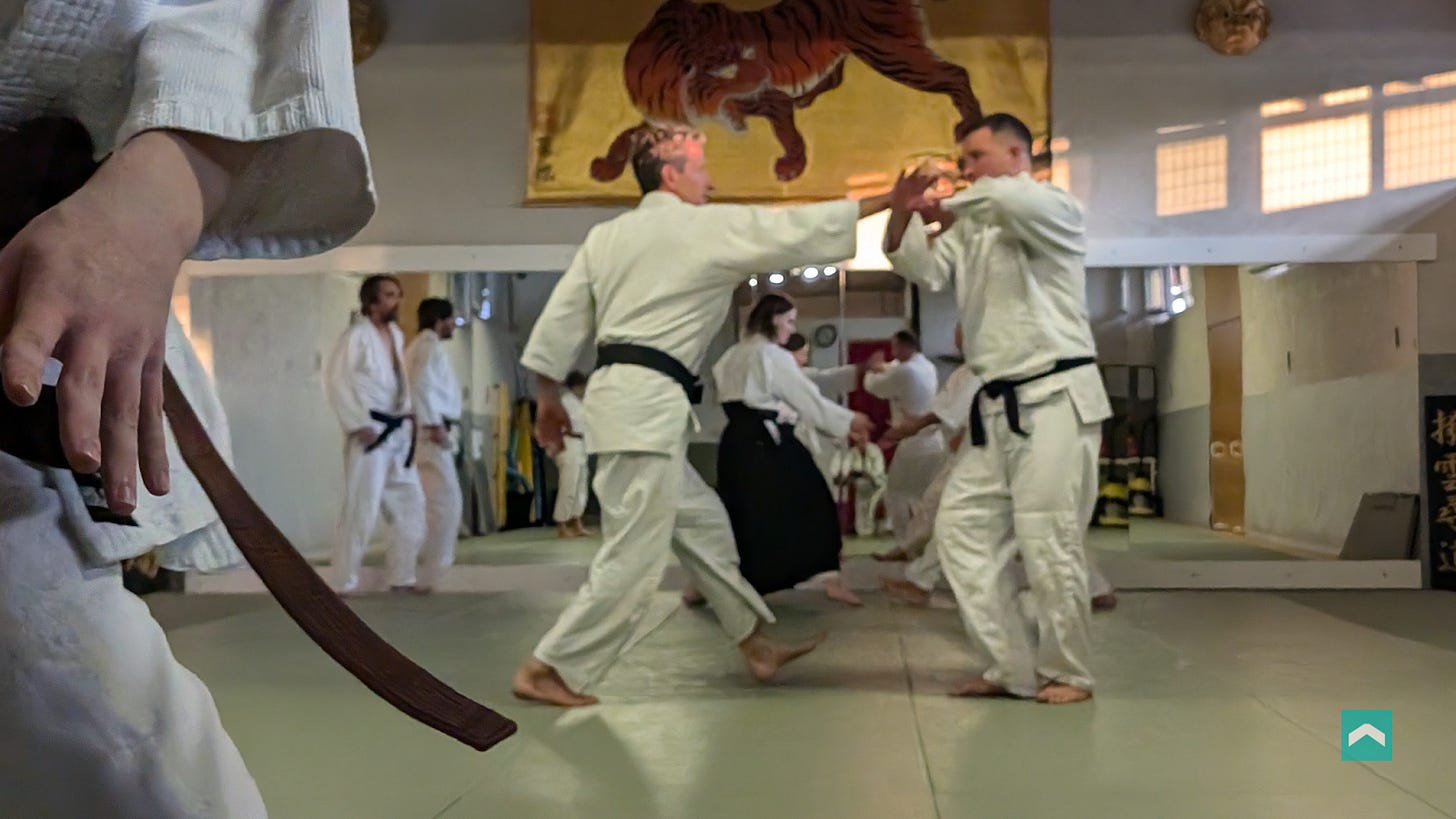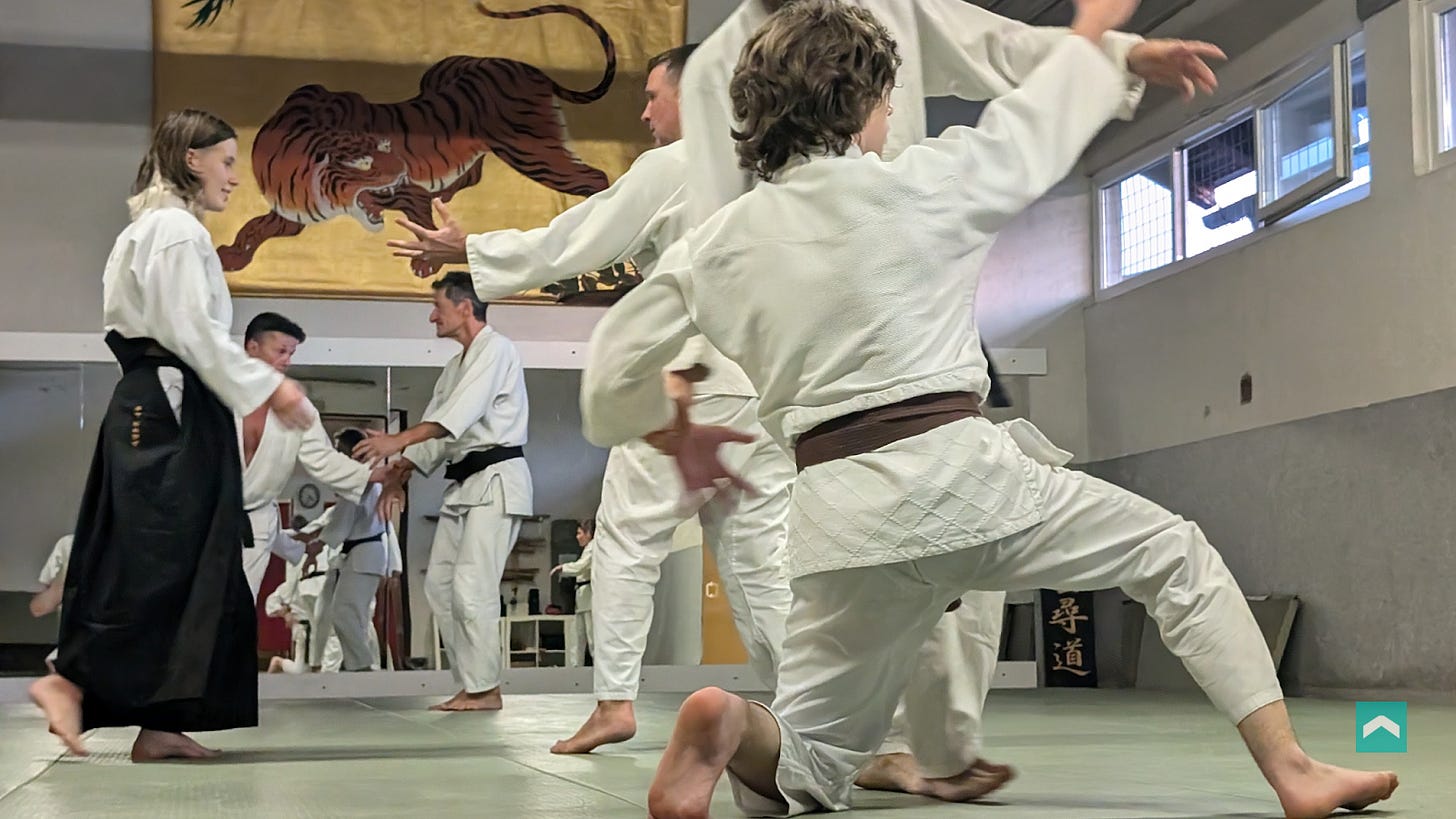From tension to flow: Aikido training with clarity. Part 1
A practical framework for improving Aikido practice using principles of Relaxation, Stability, and Clarity.
TL;DR:
This article maps the internal milestones between beginner tension and advanced flow. Like learning to ride a bike, the breakthrough isn’t about strength or form – it’s something subtle that clicks inside. That shift often begins with physical relaxation and mental regulation – which, according to sports psychology, can be trained through structured practice. This piece offers a practical framework to help you cultivate inner qualities – relaxation, stability, and clarity – so you can move with more awareness and less frustration.
Drawing from over 20 years of Aikido practice and teaching, close study of expert practitioners, and mindfulness techniques refined through movement-based disciplines, this methodology offers a structured approach to developing fluid, instinctive technique – shifting from force to clarity and refined execution.
Aikido is about mastering yourself, not just controlling your partner. That mastery begins with awareness, deepens through practice, and shows itself through clarity in motion.
This guide is not a substitute for your instructor, who can teach you the form, axis points, sequences, and all the external mechanics. But only a few teachers can truly configure your inner world – your mental relaxation, emotional stability, or clarity of intent. That’s where this framework becomes invaluable. It helps you tune into yourself, refine your inner experience, and align it with the outward execution of technique. When both inner and outer dimensions meet, Aikido shifts from something you perform to something you embody.
Introduction
Many years ago, I watched one of my students struggle to replicate the movements of a renowned sensei. Despite his determination and effort, his imitation remained awkward, forced, and unnatural—almost painful to observe. The student's earnest attempts highlighted a common misconception: effective Aikido is more than just copying external forms – true mastery arises from an internal foundation, cultivated over years of refinement, something that mere imitation can never replicate.
And yet, when teachers spoke of this inner dimension, their advice was often vague and elusive: “Just relax,” they would say, time and again. Throughout my two decades in Aikido, this phrase was frequently accompanied by metaphors, such as comparing relaxation to a hose filled with pressurized water – not rigid nor empty, but fluid and powerful, as if filled with Ki. Despite their earnest attempts, these descriptions rarely provided practical guidance I could use, leaving me confused, frustrated, or simply smiling politely without genuinely understanding how to apply this internal dimension.
Those experiences sparked a personal inquiry into the undercurrents of relaxation – what actually shifts inside us when Aikido flows effortlessly. This exploration revealed three interconnected qualities central to effective technique: relaxation, stability, and clarity. Each builds upon the other to form a coherent path toward effortless execution and natural flow. Without relaxation, the body remains stiff and disconnected. Without stability, movement becomes erratic and reactive. Without clarity, actions lose purpose, becoming mechanical rather than intentional.
These qualities serve as internal milestones in skill development – subtle shifts in awareness, coordination, and integration. They reflect changes that often can’t be explained from the outside. Like learning to ride a bike: you try, fail, maybe fall, and then suddenly – with the same body, strength, and other measurable traits—you just ride. Something clicks. What changed??
For me, it started with physical relaxation, which brought a sense of initial stability. Then came letting go of mental tension and overthinking, which allowed for more dynamic movement and continuity. That shift unlocked emotional ease – replacing fear with confidence and even joy. And just like that, I was riding a bike. 😉
Looking back, the path moved from mental focus, to integrated control, to embodied movement. I believe that by training internal qualities like relaxation, stability, and clarity, we can move more efficiently from effort to flow.
This guide offers a clear, step-by-step approach to cultivating those qualities. Instead of relying on force or mere imitation, you'll learn to transition from mechanical repetition to fluid, instinctive execution. As you progress from coarse relaxation to refined clarity, you will unlock deeper levels of understanding and mastery in your Aikido practice.
What’s coming next
In Part 2, I’ll reveal The Core Framework – the full breakdown of how relaxation, stability, and clarity unfold across levels, from coarse physical tension to subtle precision and presence.
You’ll see the dimensions of each quality, how they evolve, how they connect, and how to use them as a map to guide your training.




